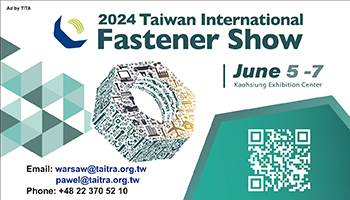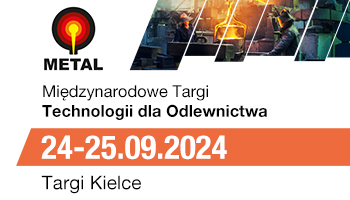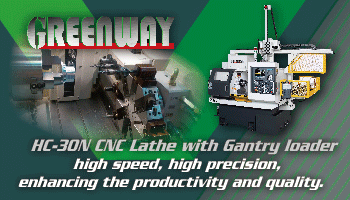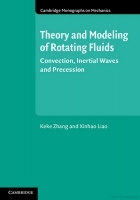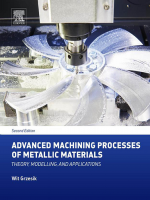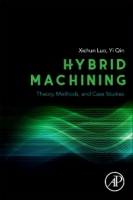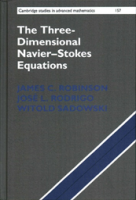Development in broaching technology. Part III. Directions of experimental investigations of broaching process and broach design
Postęp w obróbce przeciąganiem. Część III. Kierunki badań doświadczalnych przeciągania i projektowania przeciągaczy *
Author: Wit Grzesik
Mechanik nr 10/2021 - Nowości w obróbce skrawaniem
ABSTRACT: The paper structured into three parts outlines the present state of the broaching technology. The first part (Mechanik 5–6, 2021) highlighted possible process variants for internal and external operations and designs of broaching machines as well as CNC control systems and other advanced automatization forms. The second part (Mechanik 8–9, 2021) was devoted to the progressive broaching methods such as rotary broaching, hard broaching and MQL application. The third part discusses some important directions of experimental investigations carrying out for more efficient and reliable broaching processes.
KEYWORDS: broaching technology, broaching machines, broaching tools
STRESZCZENIE: Artykuł prezentuje aktualny stan obróbki przeciąganiem z podziałem na trzy części. W pierwszej części (Mechanik 5–6, 2021) opisano odmiany procesu i konstrukcje obrabiarek ze szczególnym uwzględnieniem napędu ruchu głównego, sterowania CNC i zaawansowanych form automatyzacji. W drugiej części (Mechanik 8–9, 2021) dokonano przeglądu sposobów przeciągania, takich jak przeciąganie obrotowe, materiałów utwardzonych i obróbka MQL. Trzecia część omawia ważne kierunki prowadzonych badań doświadczalnych procesu przeciągania.
SŁOWA KLUCZOWE: przeciąganie, przeciągarki, przeciągacze
BIBLIOGRAFIA / BIBLIOGRAPHY:
[1] Grzesik W. “Development in broaching technology. PartI. Development of broaching machines and tooling devices” [„Postęp w obróbce przeciąganiem. Część I. Rozwój przeciągarek i oprzyrządowania narzędziowego”]. Mechanik. 5–6 (2021): 6–11, https://doi.org/10.17814/mechanik.2021.5-6.8.
[2] Grzesik W. “Development in broaching technology. Part II.Development of broaching methods and tooling deviceson CNC machine tools“ [„Postęp w obróbce przeciąganiem.Część II. Rozwój sposobów przeciągania i oprzyrządowania narzędziowego na obrabiarkach CNC”]. Mechanik. 8–9 (2021): 6–12, https://doi.org/10.17814/mechanik.2021.8-9.12.
[3] Arrazola J.P., Rech J., M’Saoubi R., Axinte D. “Broaching: Cutting tools and machine tools for manufacturing highquality features in components”. CIRP Annals Manufacturing Technology. 69, 2 (2020): 554–577, https://doi.org/10.1016/j.cirp.2020.05.010.
[4] Olszak W. „Obróbka skrawaniem”. Warszawa: PWN (2017).
[5] Toenshoff H.K., Denkena B. “Basic of Cutting and Abrasive Processes”. Heidelberg: Springer (2013).
[6] Grzesik W. „Podstawy skrawania materiałów konstrukcyjnych”. Warszawa: PWN (2018).
[7] Kishawy H.A., Hosseini A., Moetakef-Imani B., Astakhov V.P. “An energy based analysis of broaching operation: Cutting forces and resultant surface integrity”. CIRP Annals Manufacturing Technology. 61, 1 (2012): 107–110, https://doi.org/10.1016/j.cirp.2012.03.004.
[8] Vogtel P., Klocke F., Puls H., Buchkremer S., Lung D. “Modelling of process forces in broaching Inconel 718”. Procedia CIRP. 8 (2013): 409–414, https://doi.org/10.1016/j.procir.2013.06.125.
[9] Seimann M., Peng B., Fischersworring-Bunk A., Rauch S.,Klocke F., Doebbeler B. “Model-based analysis in finishbroaching of Inconel 718”. Int. J. Adv. Manuf. Technol. 97(2018): 3751–3760, https://doi.org/10.1007/s00170-018-2221-5.
[10] Courbon C., Arrieta I.M., Cabanettes F., Rech J., ArrazolaP.J. “The contribution of microstructure and friction inbroaching Ferrite-Pearlite steels”. CIRP Annals Manufacturing Technology. 69, 1 (2020): 57–60, https://doi.org/10.1016/j.cirp.2020.04.023.
[11] Grzesik W., Rech J. “Influence of machining conditionson friction in metal cutting process. A review”. Mechanik. 92, 4 (2019): 242–248, https://doi.org/10.17814/mechanik.2019.4.33.
[12] Grzesik W. “Methods and devices for measuring metalcutting friction and wear”. Mechanik. 92, 2 (2019): 85–89, https://doi.org/10.17814/mechanik.2019.2.16.
[13] Hosseini A., Kishawy H.A. “Prediction of cutting forces in broaching operation, J. Advanced ManufacturingSystems. 12, 1 (2019): 1–14, https://doi.org/10.1142/S0219686713500017.
[14] Őzlu E., Engin S., Cook C., El-Wardany T., Budak E. “Simulation of broaching operations for tool design optimization”.Proc. 2nd Conf. on Process Machine Interactions, Vancouver, Canada (2010).
[15] Őzlu E., Araghizad A.E., Budak E. “Broaching tool designthrough force modelling and process simulation”. CIRP Annals Manufacturing Technology. 69, 1 (2020): 53–56, https://doi.org/10.1016/j.cirp.2020.04.035.
[16] Vogtel P., Klocke F., Lung D., Terzi S. “Automatic broaching tool design by technological and geometrical optimization”. Procedia CIRP. 33 (2015): 496–501, https://doi.org/10.1016/j.procir.2015.06.061.
DOI: https://doi.org/10.17814/mechanik.2021.10.14
* Artykuł recenzowany



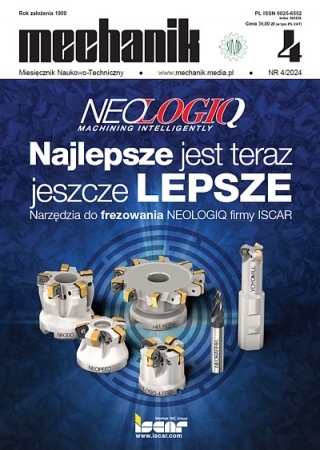
.gif)

